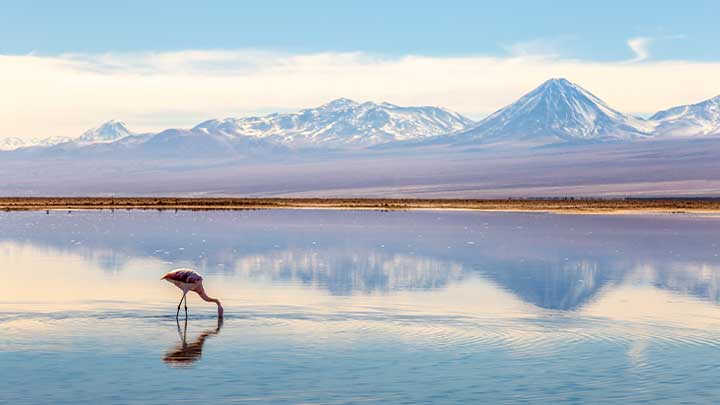eDNA for Global Environment Studies (eDGES)

The eDGES program focuses on developing and applying environmental DNA (eDNA) techniques to address challenges related to biodiversity loss and sustainability in our changing world.
Through our scientific achievements we seek to understand ecological and evolutionary changes in natural and man-made landscapes, to develop new-generation tools for identifying and managing species, and foster biodiversity conservation through whole community studies afforded to us by eDNA.
Beyond the research, our goal is to translate this knowledge into outcomes for society that will ultimately enhance our collective wellbeing.
About
- eDGES is funded by BHP’s Social Investment Framework, ‘Environment’ stream by contributing to “biodiversity conservation, water stewardship and climate change mitigation and adaptation.”
- Has five distinct projects – each builds and expands the utility of eDNA as a biological biomonitor
- Begins in 2020 and will run for 5 years
- Multiple leveraging aspects anticipated; local and international PhD training, peer reviewed papers, associated grant augmentations (eg ARC Linkages), community education, policy input.
- Public awareness events; seminars, annual stakeholder meetings, end-of-program symposium
- Contributes to the strategic BHP-Curtin Alliance (signed July 2020), whose goal is innovation, education and research
Projects
Project 1 - eDNA monitoring and conservation genomics of the Pilbara Olive Python
Aims to merge eDNA monitoring with whole genomic analyses to study the Pilbara Olive Python (Liasis olivaceus barroni), resulting in deep population genomic insights and evolutionary ecology information to guide conservation priorities. A key outcome in this study will be the generation of the first Olive Python reference genome.
Project 2 – Subterranean fauna detection and conservation
Develops new high-resolution eDNA tools for monitoring genetic diversity in subterranean animals across different sites, in order to facilitate their conservation and obtain new groundbreaking information into the evolutionary processes in this hidden world.
Project 3 – Functional ecology of Chilean precordillera lakes: towards a Wetland Health Index for birds
By uniquely combining eDNA technology with isotope analysis this project aims to not only investigate the wetland biodiversity but also characterize ecosystem web dynamics from sediment microbes to the migratory Chilean flamingos. This will allow us to understand the food chain and identify keystone species that are indicators of wetland health.
Project 4 – Improve Sensitivity and Specificity of eDNA metabarcoding tools for Invasive Marine Species detection
This project aims to develop crucial target information of invasive marine species (IMS) and native co-inhabitants from the North West Shelf of Western Australia. This will greatly enhance the ability of eDNA to detect IMS in ports, ballast and structural waters to become the first line of defence in the seas.
Project 5 – Benthic communities associated with port and harbour infrastructure in the Pilbara: Targeting invasive marine species
Environmental DNA samples will be collected from manmade assets and natural habitats across ports and harbours of the Pilbara region to identify patterns in the distribution of organisms and preferences for structure types and depth. Surveys will be made for invasive marine species and native biodiversity.
Project 6 - Terrestrial ecosystem biomonitoring with eDNA across the tree of life: the Olympic Dam case study
The objective of this project is to validate cutting edge molecular tools to assess terrestrial biodiversity (soil microbial communities, plants, invertebrates, and vertebrates) and commence development of an eDNA based metric for evaluating the condition of terrestrial ecosystems. This approach to ecosystem monitoring will advance the study of individual species to understanding entire ecosystems and how species interconnect.
Publications and Talks
Manuscripts published
- Campbell, M. A., Laini, A., White, N. E., & Saccò, M. (2022). When nets meet environmental DNA metabarcoding: integrative approach to unveil invertebrate community patterns of hypersaline lakes. Journal of Oceanology and Limnology, in press.
-
Mousavi-Derazmahalleh M, Ellis RJ, D’Rozario BL, Berry TE, Peverley G, Dawkins KL, Campbell M, White NE and Allentoft ME (2023), Rock pools as a source of environmental DNA for the detection of the threatened Pilbara olive python (Liasis olivaceus barroni). Front. Environ. Sci. 11:1187545. doi: 10.3389/fenvs.2023.1187545
- Saccò, M., Blyth, A. J., Douglas, G., Humphreys, W. F., Hose, G. C., Davis, J., … & Halse, S. A. (2022). Stygofaunal diversity and ecological sustainability of coastal groundwater ecosystems in a changing climate: The Australian paradigm. Freshwater Biology, in press.
- Saccò, M., Guzik, M. T., van der Heyde, M., Nevill, P., Cooper, S. J., Austin, A. D., … & White, N. E. (2022). eDNA in subterranean ecosystems: Applications, technical aspects, and future prospects. Science of The Total Environment, 153223.
- Saccò, M., Campbell, M. A., Nevill, P., Humphreys, W. F., Blyth, A. J., Grierson, P. F., & White, N. E. (2022). Getting to the root of organic inputs in groundwaters: stygofaunal plant consumption in a calcrete aquifer. Frontiers in Ecology and Evolution, 202.
- Saccò, M., White, N. E., Harrod, C., Salazar, G., Aguilar, P., Cubillos, C. F., … & Allentoft, M. E. (2021). Salt to conserve: A review on the ecology and preservation of hypersaline ecosystems. Biological Reviews, 96(6), 2828-2850.
- Saccò, M., White, N. E., Campbell, M., Allard, S., Humphreys, W. F., Pringle, P., … & Allentoft, M. E. (2021). Metabarcoding under brine: microbial ecology of five hypersaline lakes at Rottnest Island (WA, Australia). Water, 13(14), 1899.
- Takahashi, M., Saccò, M., Kestel, J. H., Nester, G., Campbell, M. A., Van Der Heyde, M., … & Allentoft, M. E. (2023). Aquatic environmental DNA: A review of the macro-organismal biomonitoring revolution. Science of The Total Environment, 162322.
